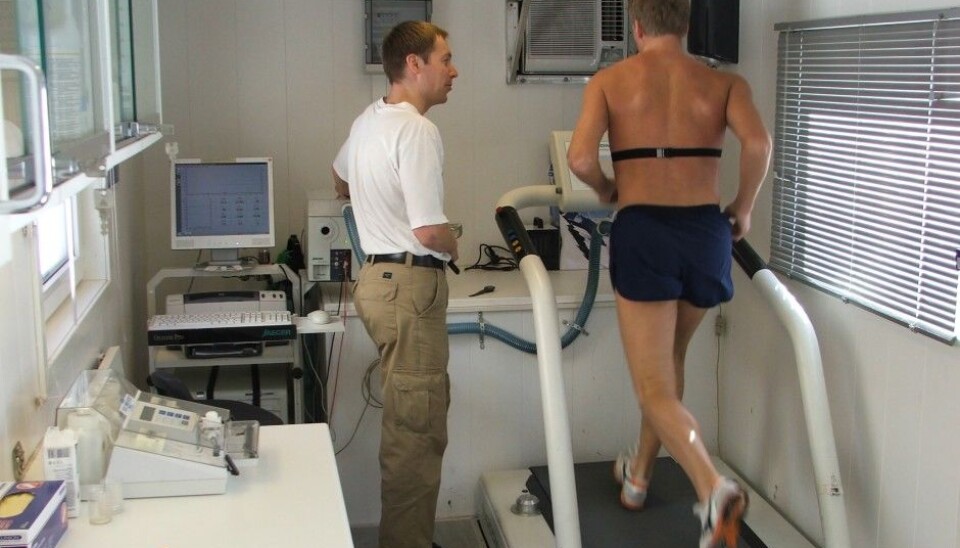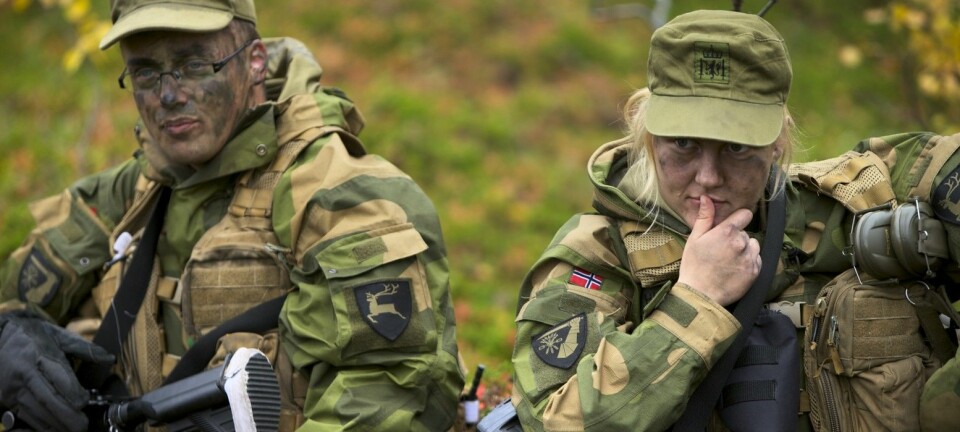This article was produced and financed by The Norwegian School of Sport Sciences

The Norwegian Home Guard's shape shown to be better than its reputation
New study finds Norwegian Home Guard soldiers to be quite physically fit.
While soldiers in the armed forces are seen as highly-trained young men and women, the soldiers in the Home Guard are viewed in a different light. Many still hold on to the belief that the Norwegian Home Guard is made up of older soldiers who squeeze into their uniforms once a year and guard a remote area of woodland with a cup of coffee at hand.
But this assumption could be proven wrong. Assistant professor Anders Aandstad at the Norwegian Defence University College and the Department of Sports Medicine at the Norwegian School of Sport Sciences have studied physical fitness and physical activity among 800 soldiers in the Norwegian Home Guard.
And his findings are encouraging: Two out of three soldiers meet the physical fitness requirements. Their level of physical activity is comparable to their fellow NATO soldiers.
"The majority of the Home Guard soldiers were physically capable of carrying out their missions. Although they scored well on average, the study found large individual differences. Many soldiers should improve their fitness and would enjoy health benefits from being more physically active. They would also see great results from high-intensity physical activity," Aandstad says.
The reformed Home Guard
The Norwegian Home Guard has been through a lot of changes since the mid 2000s. The number of soldiers has been reduced, the oldest soldiers have been replaced by younger personnel and they have established special operations forces.
Aandstad was commissioned to study physical fitness in "the new Home Guard" to determine if the soldiers were physically capable of carrying out their tasks in an effective manner.
More active at home than during duty
The soldiers that took part in the study wore activity trackers to monitor physical activity and training. They used the activity trackers both during duty and in their daily lives at home.
On average, the Home Guard soldiers were taking 10,000 steps per day. This common recommendation was reached by 44% of the participants. However, they only recorded four minutes of high-intensity activity each day.
"The results show that the soldiers recorded more minutes of high-intensity physical activity at home than during duty. According to these findings, their jobs are characterized by low-intensity activities such as being on watch," Aandstad says.
Aerobic fitness
Aerobic fitness tests found the soldiers to have an average aerobic capacity of 50 VO2max. The maximal oxygen consumption (VO2max) refers to the maximum amount of oxygen that an individual can utilize during intense or maximal exercise.
NATO states a recommended minimum of 43 VO2max for infantry soldiers. Based on this recommendation, 87 percent of the soldiers in the Home Guard would have an adequate aerobic fitness level.
"Soldiers in the Home Guard scored lower on aerobic fitness compared to other military branches. But, their results were only 15% below the average of the most professional and best trained units," he says.
The study also recorded body fat percentage and body mass index (BMI). The average body mass percentage was about 20%. In comparison, male cadets have an average body fat percentage of 16%. About 13% of the Home Guard soldiers would be classified as obese, with a BMI over 30.
Making the most out of the Home Guard
To determine if the Home Guard soldiers are physically prepared to perform their duties well, we need to analyze the physical requirements of their tasks. This has yet to be investigated, but based on their primary functions, guarding and security, the majority of the soldiers should have the required work capacity.
"The average soldier is quite physically active and their aerobic fitness levels were higher than expected. The Norwegian Armed Forces should recognize the Home Guard as a valuable asset and make better use of it in the future," Aandstad says.
































